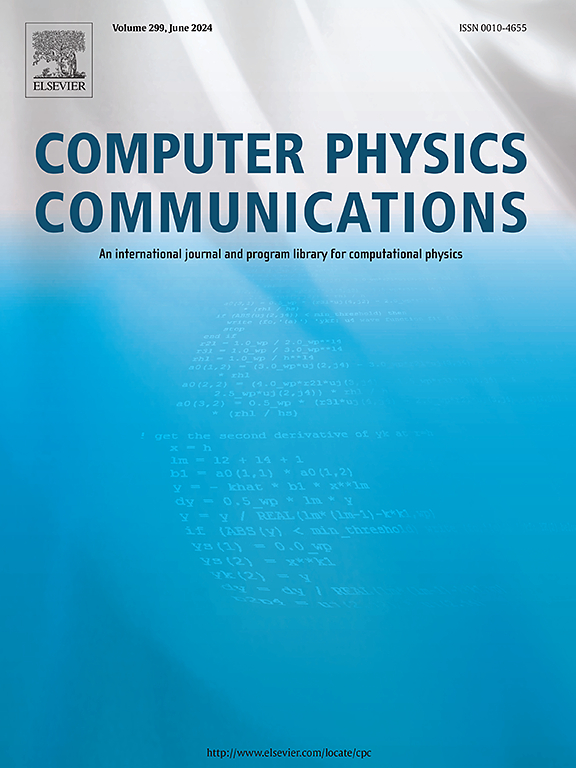γ-Cascade V4:模拟宇宙学伽马射线传播的半解析代码
IF 7.2
2区 物理与天体物理
Q1 COMPUTER SCIENCE, INTERDISCIPLINARY APPLICATIONS
引用次数: 0
摘要
由于宇宙对能量超过一百 GeV 的伽马射线并不透明,因此有必要考虑高能光子与星际辐射场的相互作用,以建立伽马射线传播模型。在这里,我们介绍一个用于伽马射线观测数据建模的公共数值软件。该软件可以计算电磁级联和宇宙学红移对伽马射线光谱的影响。这里介绍的代码是基于最初的 γ 级联,并在此基础上改进了它在高红移下的性能,引入了新的传播模块,增加了更多的河外辐射场模型,从而能够估计 EBL 建模固有的不确定性。我们将这一新代码的结果与现有的蒙特卡洛电磁传输模型进行了比较,发现在 EBL 的不确定性范围内两者的结果非常一致。本文章由计算机程序翻译,如有差异,请以英文原文为准。
γ-Cascade V4: A semi-analytical code for modeling cosmological gamma-ray propagation
Since the universe is not transparent to gamma rays with energies above around one hundred GeV, it is necessary to account for the interaction of high-energy photons with intergalactic radiation fields in order to model gamma-ray propagation. Here, we present a public numerical software for the modeling of gamma-ray observables. This code computes the effects on gamma-ray spectra from the development of electromagnetic cascades and cosmological redshifting. The code introduced here is based on the original γ-Cascade, and builds on it by improving its performance at high redshifts, introducing new propagation modules, and adding many more extragalactic radiation field models, which enables the ability to estimate the uncertainties inherent to EBL modeling. We compare the results of this new code to existing Monte Carlo electromagnetic transport models, finding good agreement within EBL uncertainties.
求助全文
通过发布文献求助,成功后即可免费获取论文全文。
去求助
来源期刊

Computer Physics Communications
物理-计算机:跨学科应用
CiteScore
12.10
自引率
3.20%
发文量
287
审稿时长
5.3 months
期刊介绍:
The focus of CPC is on contemporary computational methods and techniques and their implementation, the effectiveness of which will normally be evidenced by the author(s) within the context of a substantive problem in physics. Within this setting CPC publishes two types of paper.
Computer Programs in Physics (CPiP)
These papers describe significant computer programs to be archived in the CPC Program Library which is held in the Mendeley Data repository. The submitted software must be covered by an approved open source licence. Papers and associated computer programs that address a problem of contemporary interest in physics that cannot be solved by current software are particularly encouraged.
Computational Physics Papers (CP)
These are research papers in, but are not limited to, the following themes across computational physics and related disciplines.
mathematical and numerical methods and algorithms;
computational models including those associated with the design, control and analysis of experiments; and
algebraic computation.
Each will normally include software implementation and performance details. The software implementation should, ideally, be available via GitHub, Zenodo or an institutional repository.In addition, research papers on the impact of advanced computer architecture and special purpose computers on computing in the physical sciences and software topics related to, and of importance in, the physical sciences may be considered.
 求助内容:
求助内容: 应助结果提醒方式:
应助结果提醒方式:


